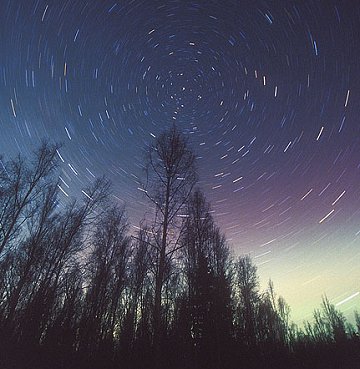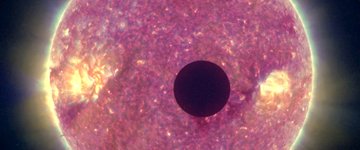 The space shuttle flies in April. Would you like a call when it soars over your backyard? Spaceweather PHONE!
The space shuttle flies in April. Would you like a call when it soars over your backyard? Spaceweather PHONE!
HAPPY PI DAY: March 14th (3.14) is  day, and all around the world mathematicians are celebrating this compelling and mysterious constant of Nature. Pi appears in equations describing the orbits of planets, the colors of auroras, the structure of DNA. It's everywhere.
day, and all around the world mathematicians are celebrating this compelling and mysterious constant of Nature. Pi appears in equations describing the orbits of planets, the colors of auroras, the structure of DNA. It's everywhere.
Mathematicians have been struggling to calculate  for thousands of years. Divide the circumference of a circle by its diameter; the ratio is
for thousands of years. Divide the circumference of a circle by its diameter; the ratio is  . Sounds simple, but the devil is in the digits. While the value of
. Sounds simple, but the devil is in the digits. While the value of  is finite (a smidgen more than 3), the decimal number is infinitely long:
is finite (a smidgen more than 3), the decimal number is infinitely long:
3.14159265358979323846264338327950288
41971693993751058209749445923078164
0628620899862803482534211706...more
Supercomputers have succeeded in calculating more than 200 billion digits and they're still crunching. The weirdest way to compute  : throw needles at a table or frozen hot dogs on the floor. Party time!
: throw needles at a table or frozen hot dogs on the floor. Party time!
AURORA BOREALIS: Last night, Calvin Hall of Palmer, Alaska, pointed his camera at the northern sky and opened the shutter. While the heavens were spinning around Polaris, the auroras appeared:

"The aurora started low on the horizon and faint, but their intensity grew," he says. "Soon, I gave up on star trails and just photographed the auroras."
Sky watchers from Scandinavia to Alaska should be alert for more auroras tonight. A solar wind stream is buffeting Earth's magnetic field and causing geomagnetic storms at high latitudes.
March 2007 Aurora Gallery
[aurora alerts] [night-sky cameras]
STEREO ECLIPSE: No human has ever witnessed a solar eclipse quite like this. NASA's STEREO-B spacecraft was about a million miles from Earth last month when it photographed the Moon passing in front of the sun:

See the movie: small, medium, large.
Talk about alien! The spacecraft recorded a fantastically-colored star wrapped around an oddly-small lunar disk. "It's like we're in the wrong solar system," says Lika Guhathakurta, STEREO Project Scientist at NASA Headquarters. Yet it really is our own sun and Moon. Find out what happened from Science@NASA.

